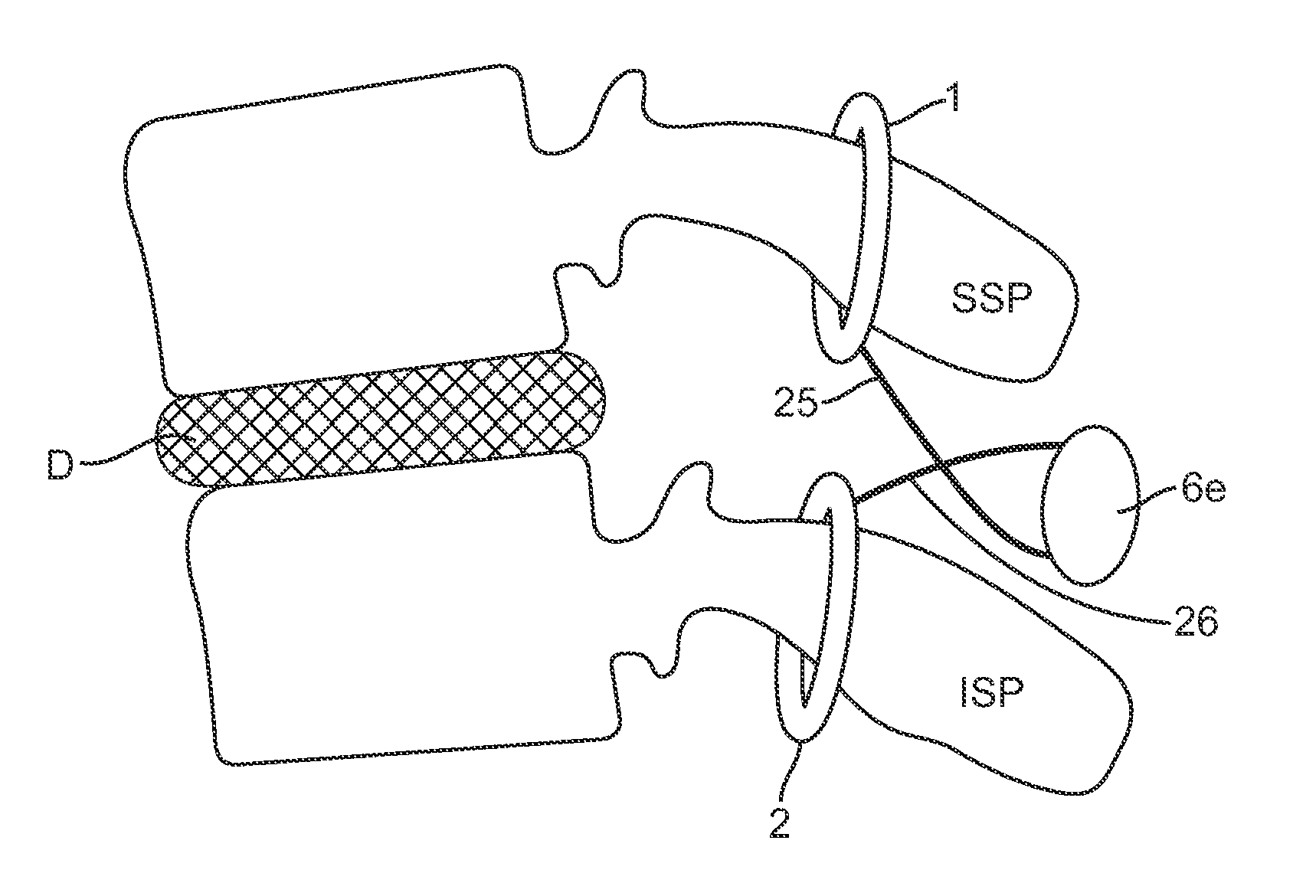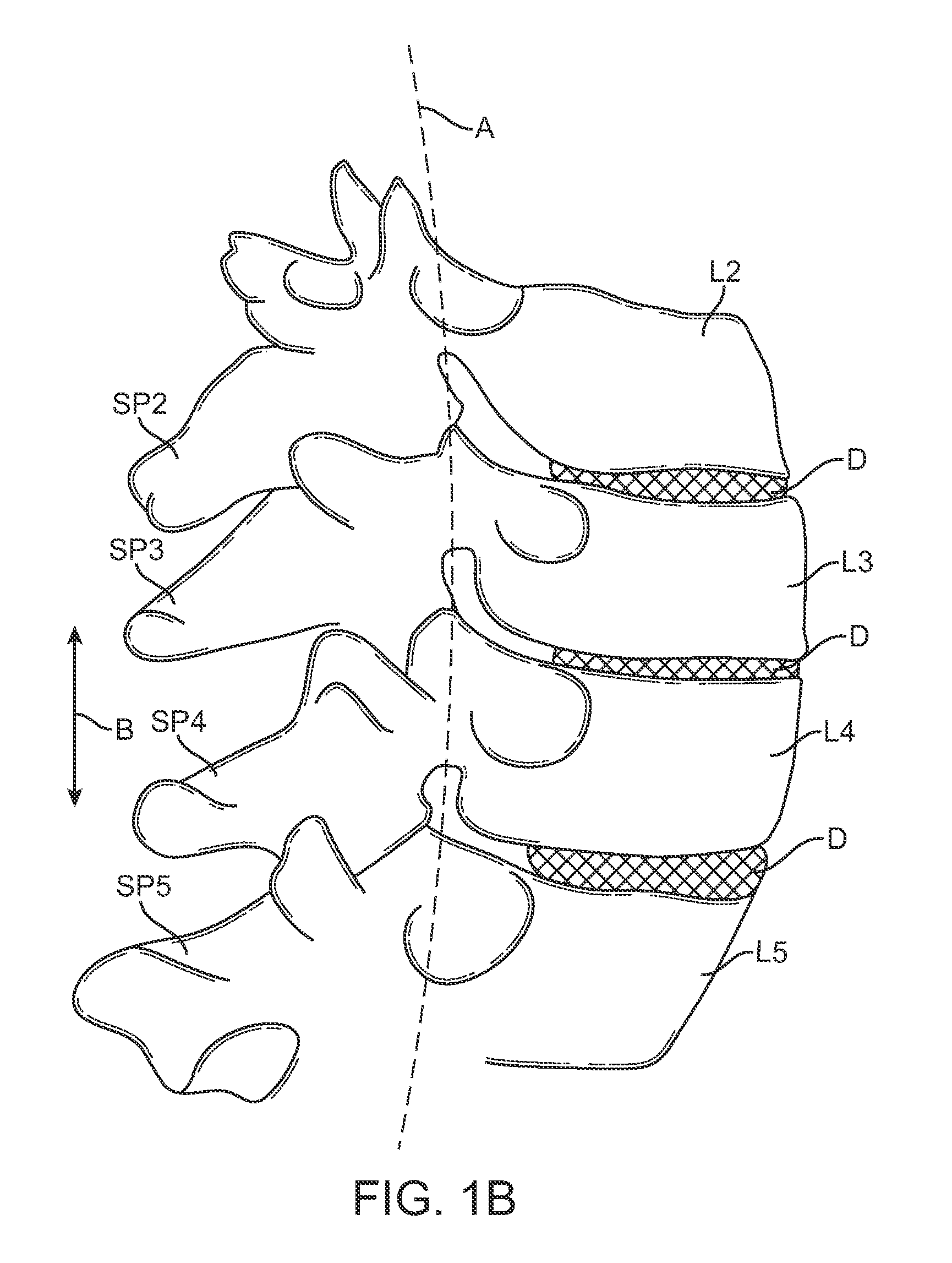Methods and devices for restricting flexion and extension of a spinal segment
a technology of spinal segment and flexion, applied in the field of medical methods and devices, can solve problems such as suffering from one or more disadvantages
- Summary
- Abstract
- Description
- Claims
- Application Information
AI Technical Summary
Benefits of technology
Problems solved by technology
Method used
Image
Examples
Embodiment Construction
[0051]The following exemplary embodiments of methods and devices will be described in the context of applying a constraint around the spinous processes to restrict flexion and extension of a spinal segment. This is intended to be for illustrative purposes only and one of ordinary skill in the art will recognize that the methods and devices disclosed herein may be used in a number of other applications and therefore are not limited to spinal surgery. The features and advantages will become apparent upon reading the following detailed description and referring to the accompanying drawings in which like numbers refer to like parts throughout.
[0052]FIG. 1A is a schematic diagram illustrating the lumbar region of the spine including the spinous processes (SP), facet joints (FJ), lamina (L), transverse processes (TP), and sacrum (S). FIG. 1B is a schematic illustration showing a portion of the lumbar region of the spine taken along a sagittal plane and is useful for defining the terms “ne...
PUM
 Login to View More
Login to View More Abstract
Description
Claims
Application Information
 Login to View More
Login to View More - R&D
- Intellectual Property
- Life Sciences
- Materials
- Tech Scout
- Unparalleled Data Quality
- Higher Quality Content
- 60% Fewer Hallucinations
Browse by: Latest US Patents, China's latest patents, Technical Efficacy Thesaurus, Application Domain, Technology Topic, Popular Technical Reports.
© 2025 PatSnap. All rights reserved.Legal|Privacy policy|Modern Slavery Act Transparency Statement|Sitemap|About US| Contact US: help@patsnap.com



